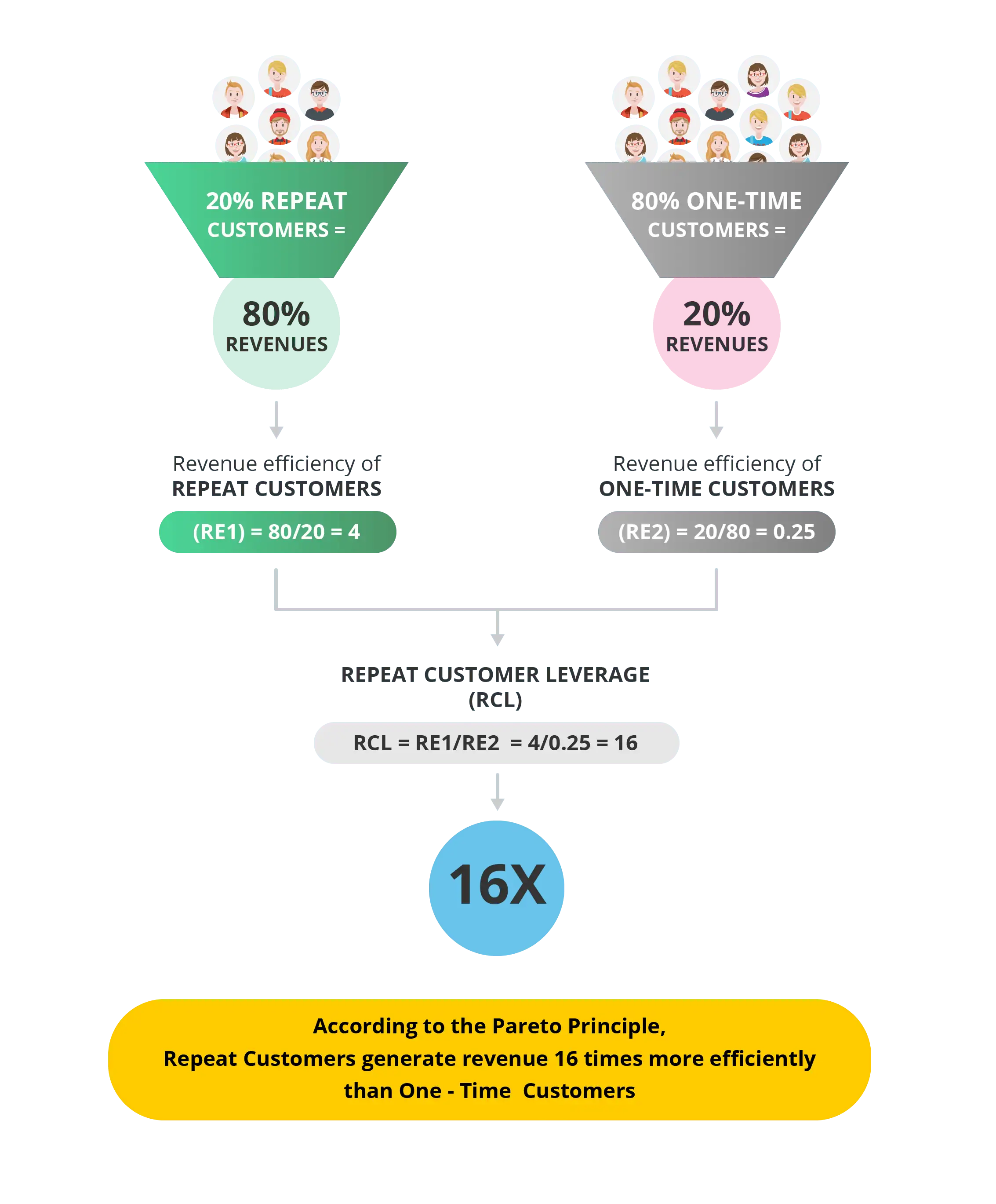Product Centric? Customer Centric? What does it all mean? To the uninitiated, all companies may seem like they are both product and customer centric. But this isn’t actually the case.
For many years and indeed throughout most of modern industrialization, the vast majority of companies have been product centric. Business organisations, be they large or small, have looked from the inside of a company outward to brainstorm, create, design, and ultimately sell a product.
You can be incredibly successful utilizing this approach, but ultimately you’re telling your customers WHAT they want – or at least what they should want. A product centric approach means listening to your customers a little bit, but ultimately telling them “this is what I’m going to sell you and it will make you happy.”
Customer centric is all about putting your customer at the very heart of your business. This isn’t simply the old “the customer is always right” mentality. The structure, culture, and ethos of a customer centric company are based upon what the customer fundamentally needs. What a customer centric company sells is a solution that will solve customers’ pressing frustrations or help them acheive their goals.
Both approaches are equally valid; however, for any SaaS company, customer centric is the best way to go. You are providing users with a solution that saves time, simplifies tasks, reduces error, or increases productivity.
Product Centric vs. Customer Centric Examples
Every business out there has its own approach. Once you wrap your head around some key examples, it will become pretty easy to see whether a company’s approach is product centric or customer centric. Let’s take a look at some of these examples.
Apple = Product Centric
As much as your iPhone, Apple Watch, and subscription to Apple TV FEELS customer centric, we’ve got some bad news. It’s not.
Back in the olden days (OK, so the early 2000s), most people’s phones were super simple. They texted, called, and even sent photographs (terrible, really terrible photographs, but the concept was mindblowing). People didn’t know they needed more. They just wanted to watch Paris Hilton on The Simple Life, own at least one bejewelled Ed Hardy trucker hat, and potentially work out how to be as cool as Seth Cohen from the OC. They were indeed “simpler” times.
Then Apple and Steve Jobs, with his turtle necks, came along and changed it all with the launch of the iPhone in 2007. Progress was made, but if you told 2006 people how much time we spend glued to our phones now, well… they just wouldn’t believe you. They would simply laugh at you in MSN screennames.
,.-~*’¨¯¨’*·~-.¸-(_ (roflCOpTer UnLik3lY d00D) _)-,.-~*’¨¯¨’*·~-.¸
This is a prime example of a product centric approach. A company that created something and told us that we wanted it and needed it.
RIP Motorla Razr. RIP.
Coke, Pepsi, Mountain Dew, Fanta… etc., etc., etc = Product Centric
Nobody NEEDS a soft drink. Water is fine and ultimately better for us. However, soft drink companies almost exclusively employ a product centric approach. These companies have created a commodity that ticks the boxes of hitting dopamine receptors, a little treat or pick-me-up, and use this approach to sell as many units as possible.
This isn’t bad; it merely illustrates that product centric companies are focused on selling their product. Any time, anywhere, in any situation, the product will suit you.
Take a moment to think about how soft drinks are marketed to customers. The adverts never tell end-users what the product’s benefits are or give us some sort of “feature” to benefit from. Soft drink adverts are often celebrity-led, like Pepsi, comedic, such as Dr Pepper, or presented aspirationally. The world can sing together in perfect harmony if you buy a Coke as an iconic example of this.
Spotify = Customer Centric
Spotify is the OG when it comes to a customer centric approach. A product centric approach to music was always the way. Digital downloads, mini discs, CDs, cassettes, vinyl, phonographs…. If you wanted to stay up to date with music, you had to buy the latest release, and the record companies told you what that NEXT BIG THING was.
Spotify unalived that entire concept, and now physical music mediums are mostly reserved for hipsters and your parents. People now treat them as rare unusual antiques (cassettes, not your parents!)
Spotify allowed us to listen to whatever music we wanted, whenever we wanted it. It was customer centric in the truest sense of the word. They listened, tweaked, and kept listening until they got it right. Spotify understood that if they put their customers first, then success would follow. And while not everybody has a premium Spotify account, any user that interacts with the platform either pays, or pays through listening to advertising. The segment that was originally targeted, has since expanded to include other segments, and customers who shout about how great Spotify is.
Netflix = Customer Centric
I mean, as far as making a product NECESSARY, these guys kind of nailed it. For most people, not being able to access the latest binge-worthy Scandinavian crime thriller or mini series on obscure serial killers… well, it sends shivers through people.
Television and film have always been product centric, albeit guided by overall consumer trends and data. Netflix took that concept, and while they initially started off as the slowest DVD rental service ever (Yep, it used to come through the mail), it then pivoted hard into a customer centric model to become the monolith it is today. Netflix literally changed not only how we watch TV, but how we are marketed, influenced, and choose our entertainment.
Netflix put customer experiences at the forefront of its very business model. They bought, acquired rights and commissioned the most unusual-sounding series, but it paid off. Who would have thought in 2019 that just one year later, in the midst of a pandemic we would be obsessing over what happened to Carole Baskin’s husband? And wondering if we could pull off a full-on mullet. A product centric approach would never have even dreamed it, but a customer centric approach made it a reality.
Why is customer centric best for SaaS?
So looking at the examples above, while all four are PRODUCTS, the two customer centric approaches are SaaS, app, or generally digitally aligned.
While Steve Jobs and his team created a product people didn’t know they needed, SaaS businesses need to ensure their customer service and UX keep up with – if not exceed – customer expectations. They need to solve, and continue to solve, a customer’s problem.
For any SaaS business, growth is hugely dependent on customer retention. Subscriber churn needs to be minimum to keep a product viable, developing and growing.

See, the thing is with product centric models is that it leans heavily on what is called the Pareto principle. This principle states that 80% of the value of a business is invested by just 20% of its customers. The remaining 80%, well, they are infrequent and will not be telling everybody how lifechanging your product is,
For a product driven approach where you want high-volume sales with less emphasis on retention, this is certainly the case. A product centric approach often sells to a wide audience in the first instance, with the vast majority of purchasers not being the right audience in the end. How many times have you bought a wonder product, only for it to end up languishing in a closet? Exercise equipment, fashion items, technology… we’ve all been there.
But with SaaS, the Pareto principle is flipped on its head. For any SaaS business to be successful over the long term, it needs to have a steady stream of customers that are loyal and committed to the product. These are your power users who not only use your product but they advocate it. They scream it from the rooftops about just how amazing it is. These customers drive your growth, create word-of-mouth marketing and become an invaluable asset as you grow.
The key thing to start off with in a customer centric approach is to look for the audience you want to serve. Rather than creating a minimal viable product to go to the mass market, look at data to segment your audience and listen to their problems and unmet needs. One great way to do this is to look at your competitors, find their reviews and look for those who give low scores. What are the complaints of the customers? How can you solve these problems? Are there trends here? This is a customer centric approach.
For a SaaS business, customer centric really is the only way to go. A product centric approach may get you sales in the short term, but isn’t sustainable for long term success – it is not a “one and done” when it comes to sales training either. Any SaaS business needs to be focused on customer centricity, putting the customer first in all aspects of their business. From product design and marketing through to pricing, customer service and ongoing user experience improvements.
By putting customers at the center of your SaaS business model, you can create loyalty that will stand the test of time. Not just surviving until the next financial quarter, but to drive growth and development, building on what you’ve already achieved.
tl;dv Can Help You DELIGHT Customers
So if customer centric is looking like the mighty fine approach for your team, tl;dv is here to help uncover all those tasty bits of user insights you’ll need.
As an AI-driven meeting assistant, tl;dv records any Google Meet or Zoom video call for free, whether it’s a user interview or internal product call. The tool captures high-quality video and sound alongside a speaker-recognizing transcript that’s available for 25+ major languages.
This intuitive meeting recorder empowers your team to document, classify, tag and clip the best bits of your user research. No missed details, no ineffective note taking or biased summaries – just the words right from the customers’ own mouth.
You can even search through all your recordings in your own cloud-based UX research repository to quickly uncover specific conversations.
If you’re ready to put customer centricity right at the heart of your SaaS business and drive serious growth, development and success, then tl;dv will shine a light on the insights you need to achieve it.
And as if that’s not enough, this time-saving, AI-powered tool offers all core features for FREE. So what are you waiting for? Give tl;dv a spin and see why customer-loving teams all over the world rely on tl;dv.





